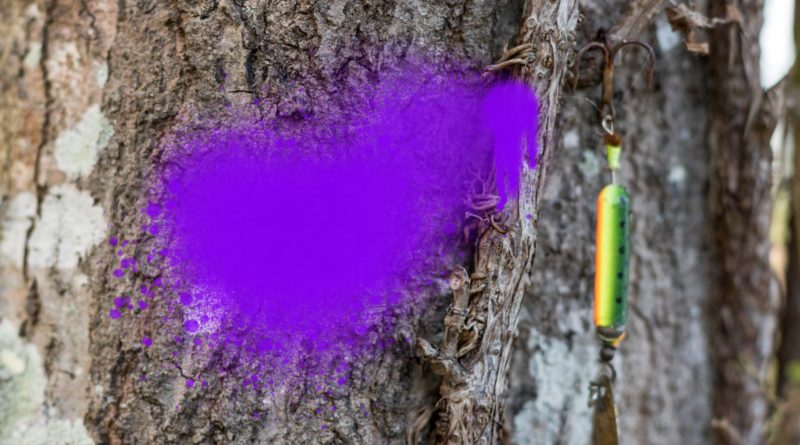Why Purple Paint Marks in New York’s Woods Should Catch Every Fisherman’s Attention
Imagine you’re out in the serene woods of the Hudson Valley or across New York State, pursuing your passion for fishing. Amidst the lush greenery, you come across an unexpected sight – trees, fences, pieces of wood, even buildings, marked with vibrant purple paint. Would you decipher the message behind these purple marks? Do you know why you should heed their signal and take prompt action?
Decoding the Purple Paint Phenomenon in New York State
A novel trend is emerging across the United States, where purple paint is fast becoming a silent but compelling “No Trespassing” sign. While not yet an official law in New York State, more than 15 states have already adopted the “purple paint law,” attributing it with the same legal weight as traditional “No Trespassing” signs.
Ever wondered why landholders are embracing purple paint over traditional signs to mark their property limits? The answer lies in its practicality. Unlike easily stolen or damaged signs, purple paint offers a resilient and cost-effective alternative, sparing landowners from the constant need for replacement.
The Birth of the Purple Paint Law in New York
In the legislative session of 2017-2018, Senator James L. Seward (R, 51st Senate District) introduced the purple paint law to the New York State Senate. The proposed law aimed to grant property owners the liberty to utilize purple paint markings on trees as an innovative approach to defining their land’s perimeters. Seward’s bill underscored the shortcomings of conventional signage – signs could be tampered with or entirely removed, creating challenges in holding trespassers accountable.
Why Purple? A Colorful Solution
Senator Seward’s reasoning for selecting purple paint was meticulous. The hue stands out distinctly in natural surroundings, remaining distinguishable even for those who are colorblind. The bill highlights that purple is not utilized in the forestry industry, ensuring there’s no confusion with existing color codes. Furthermore, this choice of color serves as a robust deterrent to trespassers.
A Safer and Practical Alternative
Seward’s bill aimed to address the vulnerability of traditional signs, especially in instances of hunting or unauthorized entry. These signs are prone to vandalism, leading to unwarranted trespassing without consequences. Besides the financial strain of constantly repairing or reinstalling signs, there’s also the concern of maintaining the sanctity of property boundaries. The purple paint law sought to eliminate or at least substantially reduce these challenges.
While Senator Seward’s bill did not progress past the assembly in January 2018, Pennsylvania passed its own purple paint law in 2020. The movement is gaining traction, underscoring the effectiveness and pragmatism of this approach in property delineation.
So, if you’re a passionate fisherman venturing into the woods, pay close attention to those splashes of purple. They’re not just a burst of color; they’re a clear message, urging you to respect property boundaries and uphold the sanctity of the natural world you love.
Last Updated on August 6, 2023 by Fish HV Contributors



